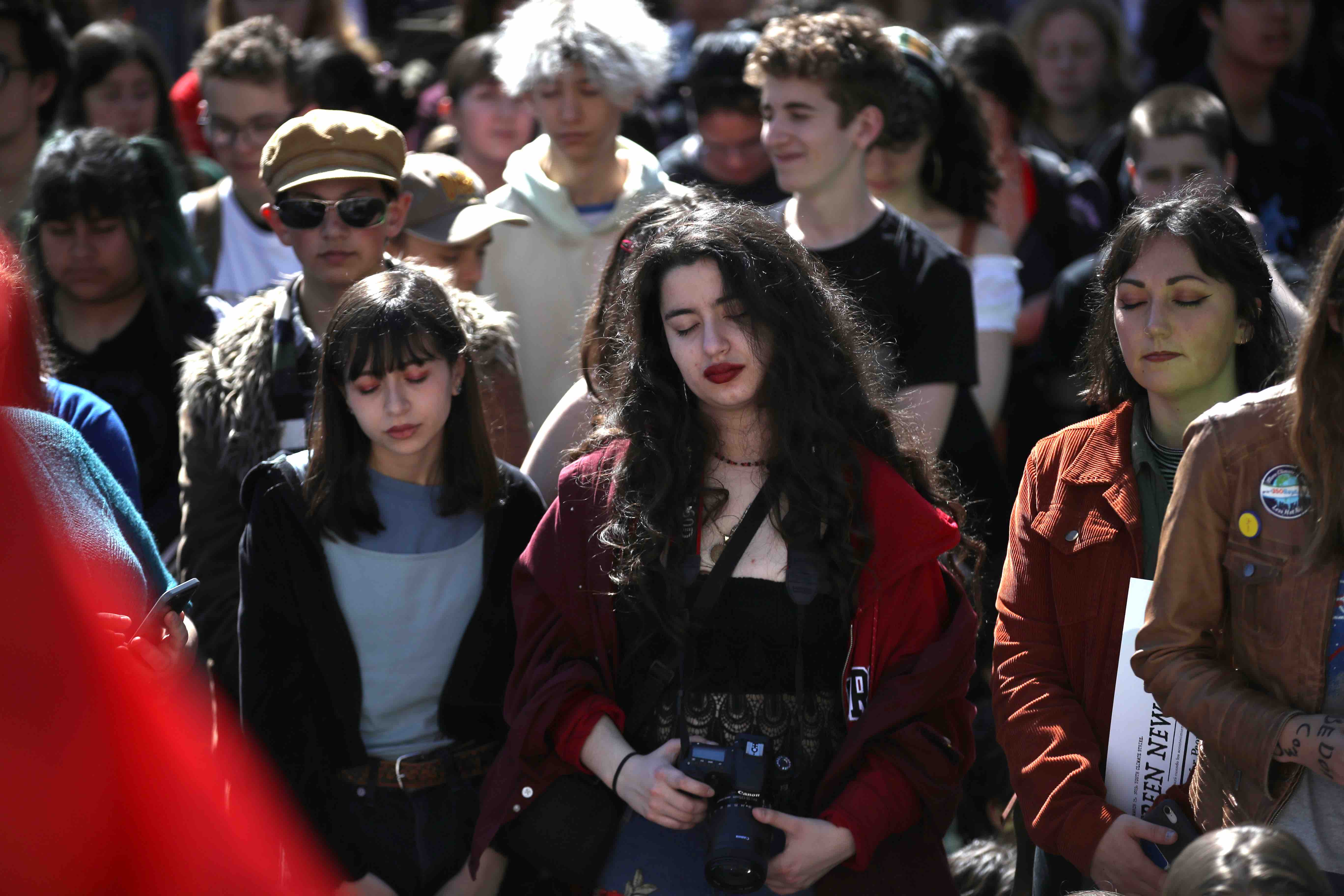Today, people from all over the world will go on strike, calling for governments to come together and address the greatest challenge facing our generation: climate change. It’s important for immigrant youth, with our transnational experiences and intersectional identities, to be on the frontlines of these efforts.
I say this as an immigrant youth myself. As a Brazilian, climate change has weighed heavier on my mind lately. Most notably, it’s because of the fires devastating the Amazon, but it’s also a perfect storm of complications that one could mistake for the turbulence happening in the United States. Brazilian President Jair Bolsonaro, known for his authoritarian inclinations and offensive ways, has leaned hard on the premise of climate denial and sovereignty to respond to any criticism of his lax attitudes when it comes to stopping and punishing those starting the fires. These are miners, loggers and agro-business owners looking to appropriate Indigenous land in order to profit off soy and cattle production. This means the lives and livelihoods of our Indigenous people are also under attack, with villages burned down and leaders assassinated.
I am a recipient of the Deferred Action for Childhood Arrivals program. I have lived in the United States for the last 18 years and have not been back since, so what makes this issue particularly personal is the divisiveness this Brazilian administration has created within my own family. So much so that once Bolsonaro declared climate change a hoax, his followers, including my parents, immediately took up the claim. I was painfully aware of my parents going from strong Workers’ Party (PT) supporters to backing Bolsonaro, but I had not expected them to go all in on everything he said. This new dynamic between us is maddening and it makes all my work hit that much closer to home.
Poor communities of color all over the world are the ones taking the brunt of climate change disasters.
In the U.S., environmental racism has been a problem for a long time: where polluting factories, ports, oil/fracking refineries are allowed to be built; where landfills are placed and their runoff allowed to run and seep into; whose land can be taken away or invaded for state projects, such as a pipeline; whose health complaints are taken seriously; and other environmental factors have always been predicated on how much money and access to recourse a community or family has. It’s no surprise then that poor communities of color are the ones most affected by these and other consequences of the human impact on climate change.
Poor communities of color all over the world are the ones taking the brunt of climate change disasters. Hurricanes of unprecedented force are devastating communities that – due to the long-term effects and exploitation of colonization, globalization and capitalism – have no infrastructure or resources to rebuild. Longer and hotter draughts are pushing people out of their communities, out of their countries, in search of simple livelihood. Extreme weather caused by climate change has displaced more than seven million people this year alone. These devastating consequences, which hit small, poorer countries the hardest, are mostly caused by transnational corporations and industries from wealthier countries. The same dynamics of exploitation and suffering happen at local and global levels at the intersections of class and race.

The reality is that immigrant youth of color have an intermingling of complex identities, giving us an acute awareness of the real devastation caused by human-addled natural disasters and the global connections that exist. We are also the most affected by the phenomenon, where our generation will have to live in a world much more hostile to human life.
The generational divide is stark in this issue. But the truth is that young people have always been at the forefront of any socially progressive movement. Newsboys in New York fought for child labor laws, the Student Non-violent Coordinating Committee (SNCC) led the Freedom Summer action during the Civil Rights movements, college students led protests against the Vietnam War, Immigrant youth have led on immigrants rights to deliver victories like DACA, and high schoolers have taken on the gun lobby. We take up these issues because every generation that comes up can envision a better, more inclusive future than those who have already spent their lives entrenched in a certain reality.
We need to join the climate strike with intentionality and purpose.
It is time for us to recognize the intersectionality of all these movements, as the author and revolutionary Audre Lorde has said, “We do not lead single-issue lives.” The knot that binds us all together is within us. In addition to United We Dream, other youth-led organizations, like Sunrise Movement, really understand this premise. Sunrise is known for their youthfulness, but their leadership include and center people of color. One of their core principles is “[w]e will not be divided” and that includes a global understanding of who “we” are.
Climate migration is an extremely important component of the climate issue that is rarely talked about in terms of solutions. So this is where immigrant youth can shine. We need to join the climate strike with intentionality and purpose. Our stories have the power to make this a true global issue, uniting our countries of origin with our destinies. Today, every school in immigrant communities should be going on strike to uplift our own answers, to protect our people and our world.







